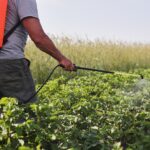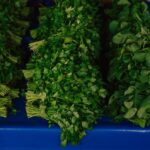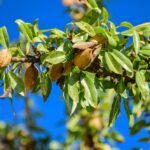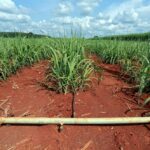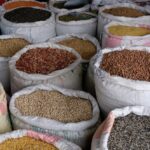As water scarcity becomes a growing concern in many regions, home gardeners are looking for ways to grow food more sustainably. One of the best strategies is to plant drought-tolerant vegetables—varieties that require less water while still producing reliable harvests. These crops are not only ideal for dry climates but also help reduce water bills, conserve resources, and build more resilient gardens.
Whether you live in an arid area or just want to prepare for dry spells, here are some of the best drought-tolerant vegetables to consider for your home garden.
1. Okra
Okra is one of the most resilient vegetables you can grow in hot, dry conditions. Native to Africa, it thrives in warm climates and requires minimal water once established.
Why it’s drought-tolerant:
- Deep taproots allow it to access moisture deep in the soil
- Grows well in poor soils and intense heat
Tips for growing:
- Sow directly in the garden after the last frost
- Harvest young pods frequently to encourage production
2. Eggplant
Eggplants are heat-loving vegetables that perform well in dry conditions, especially once mature. They need regular watering at first but tolerate drought well later in the season.
Why it’s drought-tolerant:
- Thick, waxy leaves reduce water loss
- Prefers full sun and warm temperatures
Tips for growing:
- Mulch around the base to retain moisture
- Support plants to keep fruits off the ground
3. Swiss chard
Swiss chard is a hardy leafy green that can tolerate both heat and drought better than many other leafy vegetables. It also produces continuously over a long season.
Why it’s drought-tolerant:
- Deep roots allow it to survive infrequent watering
- Can recover well after wilting
Tips for growing:
- Harvest outer leaves to encourage regrowth
- Choose heat-resistant varieties for hot areas
4. Sweet potatoes
Sweet potatoes are excellent for dry gardens. They produce edible leaves and nutritious tubers with very low water input once established.
Why it’s drought-tolerant:
- Vines shade the soil, reducing evaporation
- Tolerates poor and dry soils
Tips for growing:
- Plant slips in loose, well-drained soil
- Allow the crop to mature for at least 90 days
5. Peppers (chili and bell)
Both hot and sweet peppers adapt well to limited water, particularly after their flowering stage. Overwatering can even harm pepper plants, making them well-suited for low-water environments.
Why it’s drought-tolerant:
- Needs less water than tomatoes or cucumbers
- Produces best under warm, sunny conditions
Tips for growing:
- Avoid overhead watering to prevent fungal issues
- Pick regularly to boost continued fruiting
6. Amaranth
Amaranth is a versatile leafy green and grain crop that grows quickly with little water. It has been cultivated for centuries in dry regions.
Why it’s drought-tolerant:
- Grows well in poor, dry soils
- Both leaves and seeds are edible
Tips for growing:
- Direct sow in spring or early summer
- Use young leaves in salads or stir-fries
7. Cowpeas (Black-eyed peas)
Cowpeas are not only drought-tolerant but also enrich the soil by fixing nitrogen. They are a staple crop in many semi-arid regions.
Why it’s drought-tolerant:
- Strong root systems that access deep moisture
- Grows well in sandy or dry soils
Tips for growing:
- Sow in warm soil and thin seedlings once sprouted
- Harvest pods when young for fresh use, or let dry for storage
8. Zucchini
Zucchini and other summer squashes grow rapidly and yield heavily even with limited water, especially in well-mulched soil.
Why it’s drought-tolerant:
- Large leaves help shade the soil and conserve moisture
- Produces quickly after flowering
Tips for growing:
- Choose compact or bush varieties for small spaces
- Harvest frequently to encourage more fruit
Best practices for growing vegetables in drought-prone areas
- Use mulch: A thick layer of organic mulch helps retain soil moisture, suppress weeds, and regulate soil temperature.
- Water deeply and less often: This encourages deeper root growth, which makes plants more drought-resistant.
- Plant in raised beds or sunken beds: Raised beds improve drainage, while sunken beds in very dry areas can capture more moisture.
- Choose the right soil: Well-drained, loamy soil holds water better than sandy soils.
- Group plants by water needs: This reduces waste and ensures efficient watering.
Drought-tolerant vegetables offer a smart solution for water-wise gardening without sacrificing productivity. Okra, eggplant, Swiss chard, sweet potatoes, and amaranth are just a few of the many crops that thrive with less water. By combining careful plant selection with sustainable watering techniques, home gardeners can build a productive garden that withstands the challenges of dry weather while contributing to food security and environmental conservation.




